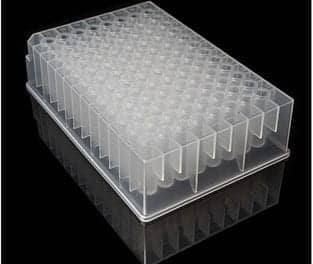Porvair Sciences’ new Krystal Glass Bottom microplates with Schott D 263 M technology provide enhanced performance for whole-plate CCD imaging and laser detection applications.
Krystal Glass Bottom plates combine the advantageous optical properties of glass, low background, and low birefringence, with the versatility of a microplate.
Constructed in ultra-pure grade borosilicate glass, the new D 263 M, Krystal Glass Bottom microplate is precision manufactured for high optical performance in high-resolution microscopy applications. These glass bottom plates offer high optical quality, thermal stability, chemical resistance, and low autofluorescence to suit a wide range of samples for accurate and reliable light and fluorescence readings. Due to the high clarity bottom of Schott D 263 M glass, exact positioning of the microplate on microscopes and imaging apparatus can be made with ease.
The latest Krystal microplate is available in different thicknesses: 50 µm, 175 µm and in addition, a high-performance version D 263 M/1.5H plate with a thickness tolerance of +/- 5 µm is also available for high sensitivity applications.
Precisely manufactured to SBS/ANSI microplate dimensions the affordable Krystal Glass Bottom design is fully compatible with all commercially available plate readers, robotic sample processors, and automated liquid handling systems. The complete Krystal range of glass bottom microplates is available tissue culture treated to optimize cell growth or without surface modification.
The Porvair Sciences Krystal glass bottom plate range demonstrate higher performance than standard polystyrene plates for fluorescence assays, luminescence detection, scintillation counting, and high-resolution microscopy using confocal imaging.
For more information, visit Porvair.




